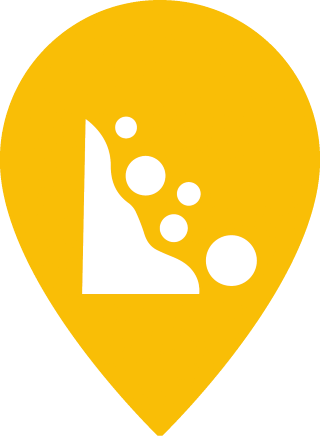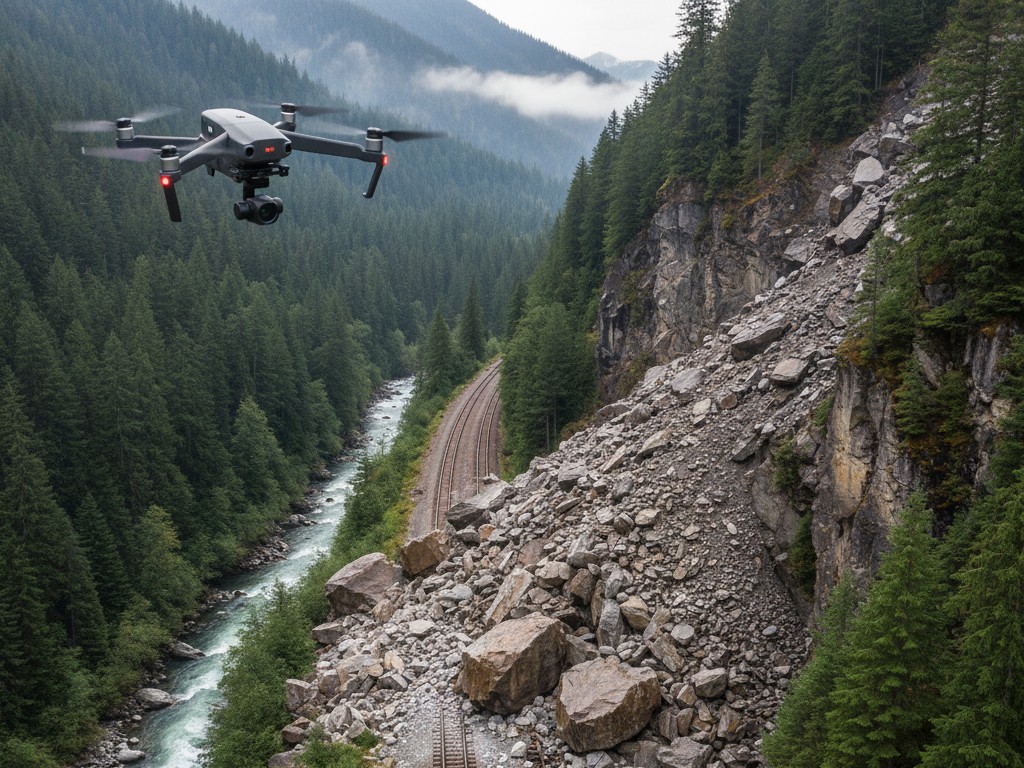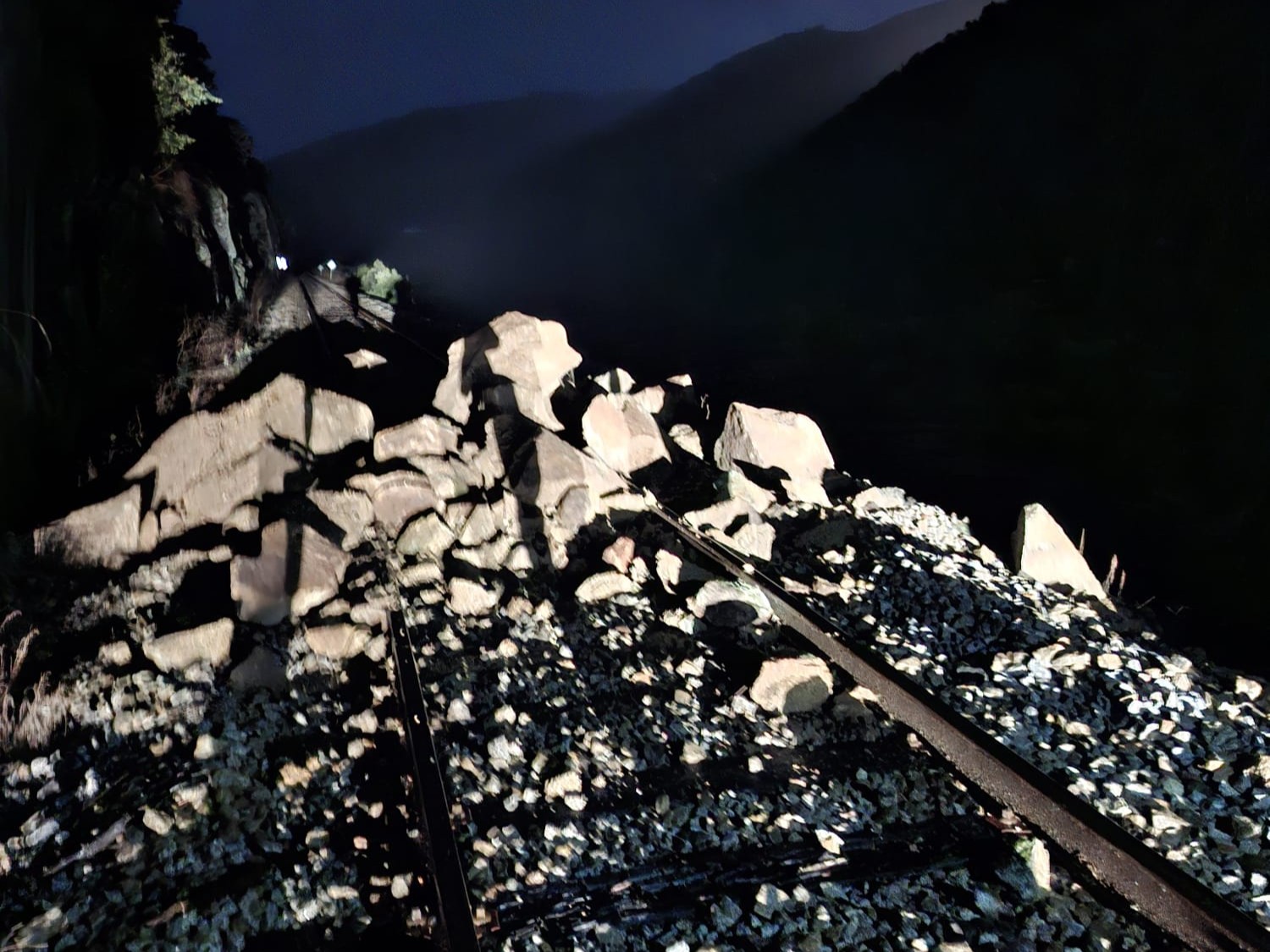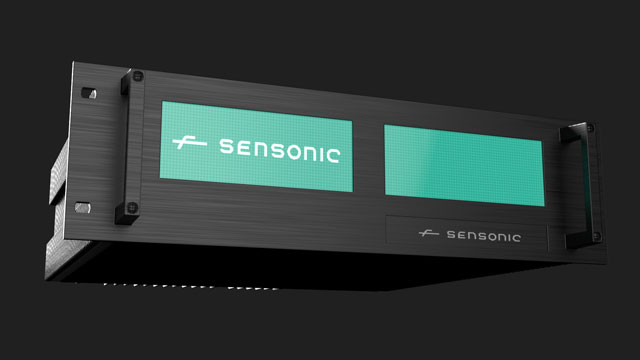Hearing Railway Climate Complaints and Calamity
Nature's forces of water and gravity combine to pose huge challenges to railway operations and resilience. Natural hazard threats such as rockfalls, landslides, washouts, avalanches, sink holes and even toppled trees lead to, at best, disrupted rail operations and financial loss. At worst, if unseen, these hazards can lead to tragic loss of life and environmental disaster. Climatechange compounds the rail-resilience challenge as extreme weather events escalate.
Ensuring the safety of railway users is essential, so our Sensonic team have pioneered a revolutionary approach to detecting natural and geohazards along railways that overcomes the limited reach and coverage of traditional sensors. Using Distributed Acoustic Sensing (DAS), we transform railway fibre optic infrastructure into an intelligent surveillance network listening out for track trouble.
The Sense of Sound: Hearing the Unseen
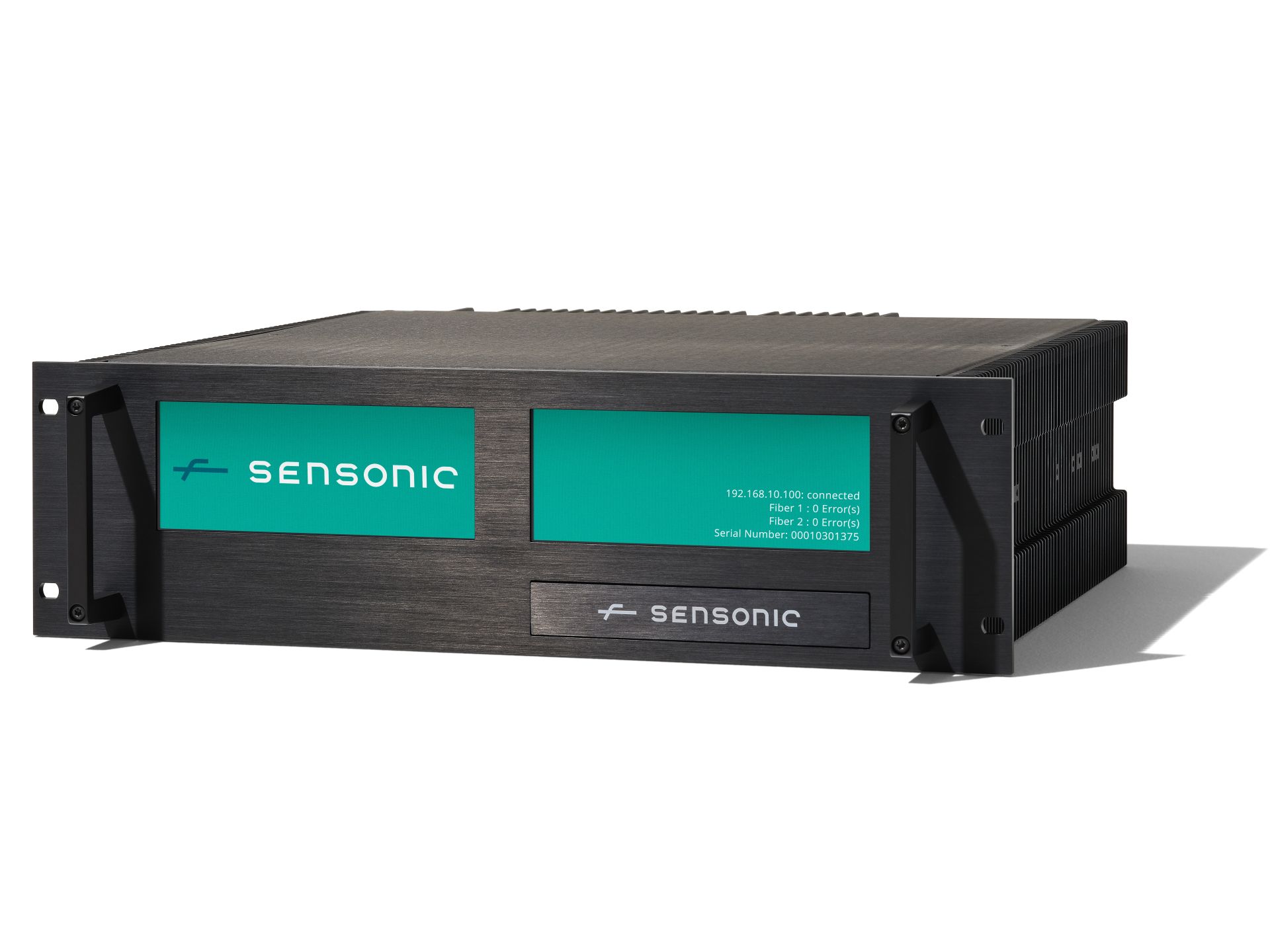
Distributed Acoustic Sensing (DAS) is a technique to detect sound and ground vibrations via fiber optics. The technology uses light pulses and analyses the reflected light turning an optical fiber into a continuous acoustic sensor listening to entire rail routes.
See how DAS technology works here
Each sensing device monitors up to 80 kilometres (50 miles) of track. That is around 1000 times the range of a standard CCTV camera and over 15,000 times the range of a tilt or pole sensor. The long-range reach is why the technology already excels in both pipeline monitoring and international border surveillance duties.
Advanced algorithms, powered by AI and machine learning, analyse vibration data in real-time to listen for natural hazards and alert teams when their characteristic vibrations are detected.
Key Natural Hazard Threats Identified
Falling rocks generate ground vibrations. Algorithms recognise the characteristic vibrations providing real-time geolocated alerts to enable operations teams to respond effectively.
Ground vibrations from rapidly moving earth and tumbling materials are identified automatically by
advanced algorithms. 24/7 alerts allow operations teams to prevent railway accidents and rolling stock damage.
Ground vibrations from tumbling ballast and fast flowing water show the potential during track trials to trigger real-time alarms for operations
teams alerting them of compromised rail routes, avoiding a natural hazard becoming a rail disaster.
Accidents, overhead structure failures or falling trees can lead to debris obstructing the track. Detecting the acoustic signatures of these object
impacts, we allow operations staff to take appropriate action before trains arrive and direct teams for clean-up.
Many more natural hazard applications are possible pending development data. Contact our team for development partnership opportunities
Find more Natural Hazard Applications
Listening and Looking
Knowing where, when and what natural hazard or geohazard threat is present is vital for rail operations teams. Combining DAS insight with other monitoring technologies can provide enhanced benefits. Integration with new or existing CCTV and the ability to trigger alerts in existing monitoring systems, cameras can be accessed and controlled near to sonically geolocated hazards. This allows rapid remote visual confirmation and enhanced situational awareness giving teams both eyes and ears on site remotely.
Outside the range of CCTV cameras, Sensonic DAS goes the extra mile too. Sensonic extends visual coverage by integrating DAS and drone capability together through selected partners. Drones are particularly useful for rapid response in remote, hazardous or difficult to access areas. As hazards are accurately geolocated with the DAS system, manned or fully autonomous drones can be dispatched to the incident location to gather more information via high-definition video. The use of lidar and thermal imaging allows hazards to be further monitored and assessed remotely before anyone puts a boot onto ballast.
Intelligent Investment in Responsive Railways
DAS technology provides a unique and intelligent solution for railways to rise to rising weather and climate challenges. Its ability to remotely detect
natural hazards in real-time over vast lengths of rail infrastructure gives operations and maintenance teams an immensely powerful tool at their disposal. Using often pre-existing fibre infrastructure, Sensonic can deliver a cost-effective and rapidly scalable natural hazard monitoring solution. There is no need to install, maintain and reset a forest of new lineside sensors,
as a single monitoring unit can offer 80km of route protection. This elegantly simple yet powerful solution enhances railway safety, protecting passengers, personnel, freight and rolling stock from rockfalls, landslides and more.
Contact our Sensonic team to learn more about how listening to rail infrastructure simply makes sense, and how DAS can revolutionise your railway resilience responses.

